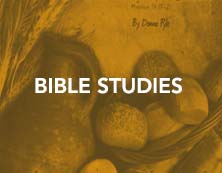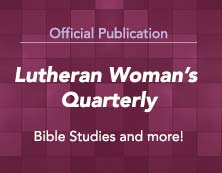A printable PDF can be found at the end of this article.
Bylaws
Bylaws are the fundamental rules or laws of a society, which include among other things its objects, its membership, its officers, how and when it meets for business, how many must be present in order that business may be transacted, and how they, the bylaws, may be modified.
Henry M. Robert, Parliamentary Law, p. 569.
The Role of a Structure Chairman
- Thank God for the opportunity that you have been given to serve the LWML in this special way.
- Familiarize yourself with the bylaws of your district/zone/group LWML.
- Review the district/zone/group LWML bylaws.
- Enlist the help of the district parliamentarian.
- Keep things simple.
- Encourage review of all bylaws in zones and societies every two years. District bylaws should be reviewed and amended on a biennial basis.
You will find some suggestions below to help you fulfill your role as Structure Chairman.
Basic Bylaws
When writing bylaws for a new group, it is better to write basic bylaws that fit your group’s needs rather than trying to follow sample bylaws. Since every organization is different, you should not try to make someone else’s bylaws fit your group.
Bylaws are not set in stone. Bylaws are a permanent document, intentionally difficult to change, but should be current. They can be changed, and ought to be, if the language has proven to be confusing and ambiguous or the structure is outdated and impractical. Bylaws need to live and breathe, reflecting the group’s thinking and present practice.
Start with the current edition of Robert’s Rules of Order Newly Revised for the individual articles needed and follow the guidelines given there, or use the following as a guide. You should also review the sections on Group, Zone, and District in the LWML Handbook.
Note: Five (5) articles – Name, Object, Members, Representation at Convention, and Parliamentary Authority – must be in compliance with the LWML bylaws. These articles are indicated with an asterisk.
Name*
Identify the organization. State the full, exact, properly punctuated name. Also state affiliation with the LWML and The Lutheran Church—Missouri Synod.
Object*
State the organization’s purpose.
Begin with the object of the LWML, as required. The object of the LWML is:
- to develop and to maintain a greater mission consciousness among the women of the Synod through Mission Education, Mission Inspiration, and Mission Service;
- to gather funds for mission grants either directly sponsored or approved by LCMS boards or LCMS district presidents, especially those for which no adequate provision has been made in LCMS or LCMS district budgets.
Then add others as desired. Be specific (e.g., foster Bible study and fellowship).
Members*
Specify:
- who can become a member.
- how one becomes a member.
- how membership is maintained.
- the rights and duties of members.
Officers
- Specify the officers, their election, and their duties.
- Indicate the qualifications for holding office.
- State the length of the term of office. Include the phrase ―until a successor is elected‖ to avoid having no officers if an emergency delays the election.
- Specify the method of filling a vacancy.
Concerning ―Duties of Officers: If duties are to be listed, they are usually included in a separate article that follows the article on Officers. Include only major responsibilities with details listed in a Procedures Manual.
Concerning ―Nominations and Elections: If the provisions for nomination and election are complex, they require a separate article, following the article on Duties of Officers.
Concerning ―Appointed Personnel: When there are Appointed Personnel, these offices should be listed in a separate article following the Nominations and Elections article.
Include who makes and approves the appointments, what responsibilities and rights the special appointed personnel have, the term of office, and the number of terms allowed.
Pastoral Counselor
- Include how the counselor(s) is/are elected or appointed, the term of office, duties, rights, and privileges.
- Specify how a vacancy is filled.
Meetings
- Specify number of meetings per year and their special purposes.
- State provision for special meetings, by whom they may be called, by how many members, and for what purposes.
- If a quorum is to be specified, include it in this article.
- Make provision for changing or canceling meetings in an emergency.
Representation at Conventions*
- Include how the group is represented in the other LWML events such as rallies and conventions.
- State how delegates/alternates are selected and list their responsibilities.
Executive Committee and/or Board of Directors
- Include statements about the Executive Committee (a small group) whose members are all members of the Board of Directors, which includes all officers and personnel that serve in an advisory capacity. If there is a great deal of information to be included about each group, use two (2) articles and place the article about the Board of Directors first.
- Identify the members of each, their responsibilities and their powers, and any special rules governing their term of office.
- Include special rules by which the boards conduct their business, such as when and how often it is to meet, quorum, etc.
Committees
This article pertains to both standing (permanent) and special (temporary) committees. Section 1―Standing Committees and Section 2―Special Committees will include sub-sections for each committee and include the committee name, composition, method by which members and chairman are selected, and duties. Section 3 would authorize the formation of other standing and special committees as deemed necessary.
Finances
Include statements as to how finances are handled, giving adequate details. When providing for reimbursement of expenses, keep the bylaws general and include specifics (amount per mile, allowance per day, etc.) in the standing rules. The beginning and ending dates for the fiscal year should be listed here or in a separate article.
Mission Grants
For district LWML bylaws only. Include the basic requirements for submitting, selecting, and dispersing funds for district mission grants.
Dissolution
If included, should be placed just before the article on parliamentary authority. Some state laws now require that organizations include this article in their bylaws.
Parliamentary Authority*
This provides for a standard set of rules for conducting business. All organizations affiliated with LWML must use the current edition of Robert’s Rules of Order Newly Revised.
Amendments
Include the procedure for amending bylaws, especially in relation to giving notice and vote, usually two-thirds (2/3) necessary to adopt.
Bylaws Tips
Bylaws should:
- be short and concise.
- be organized into articles, as main headings, with further division into sections and subsections.
- be carefully worded so as to avoid misunderstanding and confusion.
- use correct punctuation for clarity.
- have all pages numbered and dated.
- include a table of contents.
- be consistent in terminology. (Use of the LWML Style Guide is suggested.)
- include reference to individual members of the LWML.
- be reviewed on a regular basis.
Procedure for Reviewing Bylaws
Before You Begin
- Seek the Lord’s counsel, trust His care and count on His guidance.
As You Start
- Check your current bylaws for outdated procedures, contradictions, lack of consistency, similar objects not treated/grouped together, ambiguous language, too many details or incomplete information, patchwork effect, lack of dates.
- Follow the prescribed process for amendments or revision.
- Involve every member in discussion about what the bylaws say.
- Encourage questions and suggestions on how to improve the bylaws language.
During the Review Process
- Write bylaws as one word.
- Strike the word local when referring to societies, since this is redundant.
- Specify who fills a vacancy in the office of president (or leader), should one occur, and by what procedure.
- Give every opportunity for input into the amendment’s final form.
When Preparing Proposed Changes
- Provide a rationale for each proposed amendment.
- If the changes indicate it, include a proviso to describe how and when the new conditions will be implemented.
- Use the parallel format when submitting amendments for approval, underlining the amended words and phrases (see example on the final page of these guidelines).
Remember To
- Send the required number of copies of amendments or revisions (along with copies of current bylaws) to the appropriate body for approval prior to presentation for adoption. (Zones or districts may approve group bylaws, districts usually approve zone bylaws and the LWML approves district bylaws.
- Allow an appropriate turn-around time for the approving body to do its work.
- Give adequate notice about the date for final approval (usually at the previous regular meeting).
After Adoption
- Record at the end of your bylaws the original date of adoption and dates of subsequent amendments (month and year).
- Send the required number of copies of approved bylaws to the appropriate body of filing.
- Make copies of the amended bylaws and distribute them to each member.
- Encourage each member to take ownership of the bylaws.
Sample Format of “Parallel Form” for Submitting Amendments
LWML District Bylaws
Proposed Date of Approval
Proposed Amendment
Rationale: To extend the term of office from two (2) years to four (4) years.
| Existing bylaws read: | If adopted, will read: |
| Section 2 | Section 2 |
| The elected officers shall be elected by ballot to serve for a term of two (2) years or until their successors shall be elected, and shall not be eligible for reelection to the same office. | The elected officers shall be elected by ballot to serve for a term of four (4) years or until their successors shall be elected and shall not be eligible for reelection to the same office. |
Resources
Use the current edition of RONR (Robert’s Rules of Order Newly Revised), the LWML Bylaws, the Guidelines in the LWML Handbook, and perhaps a neighboring group/zone/district bylaws.
Spotlight on Bylaws and What Does It Say in the Bylaws? from the National Association of Parliamentarians (parliamentarians.org) are also available as a guide.
Your LWML Structure Committee Chairman, district LWML structure/bylaws chairman, or parliamentarian are there to help you.
But everything should be done in a fitting and orderly way. 1 Corinthians 14:40 (NIV)
View printable PDF of this article, Guidelines for Structure Committees









